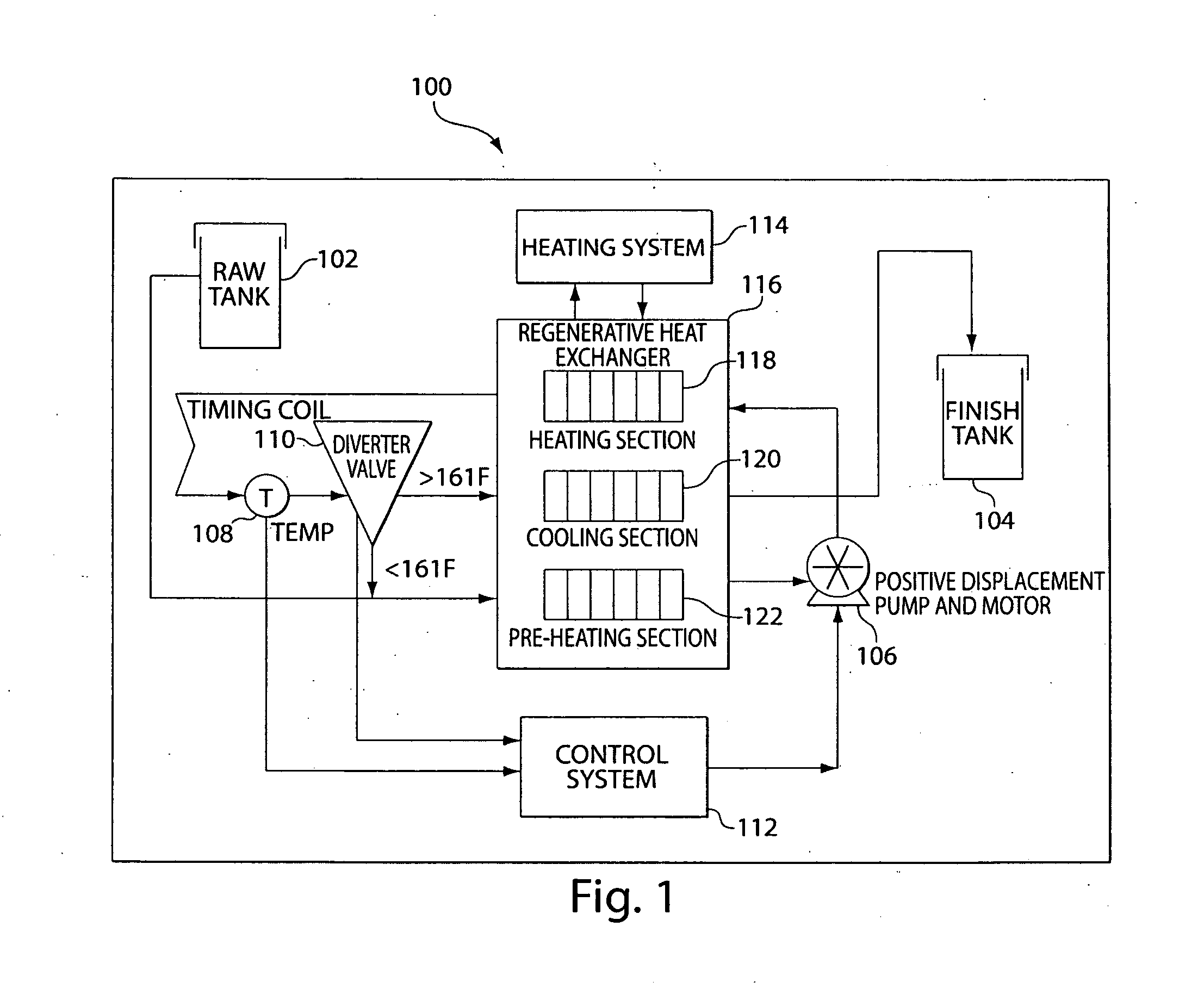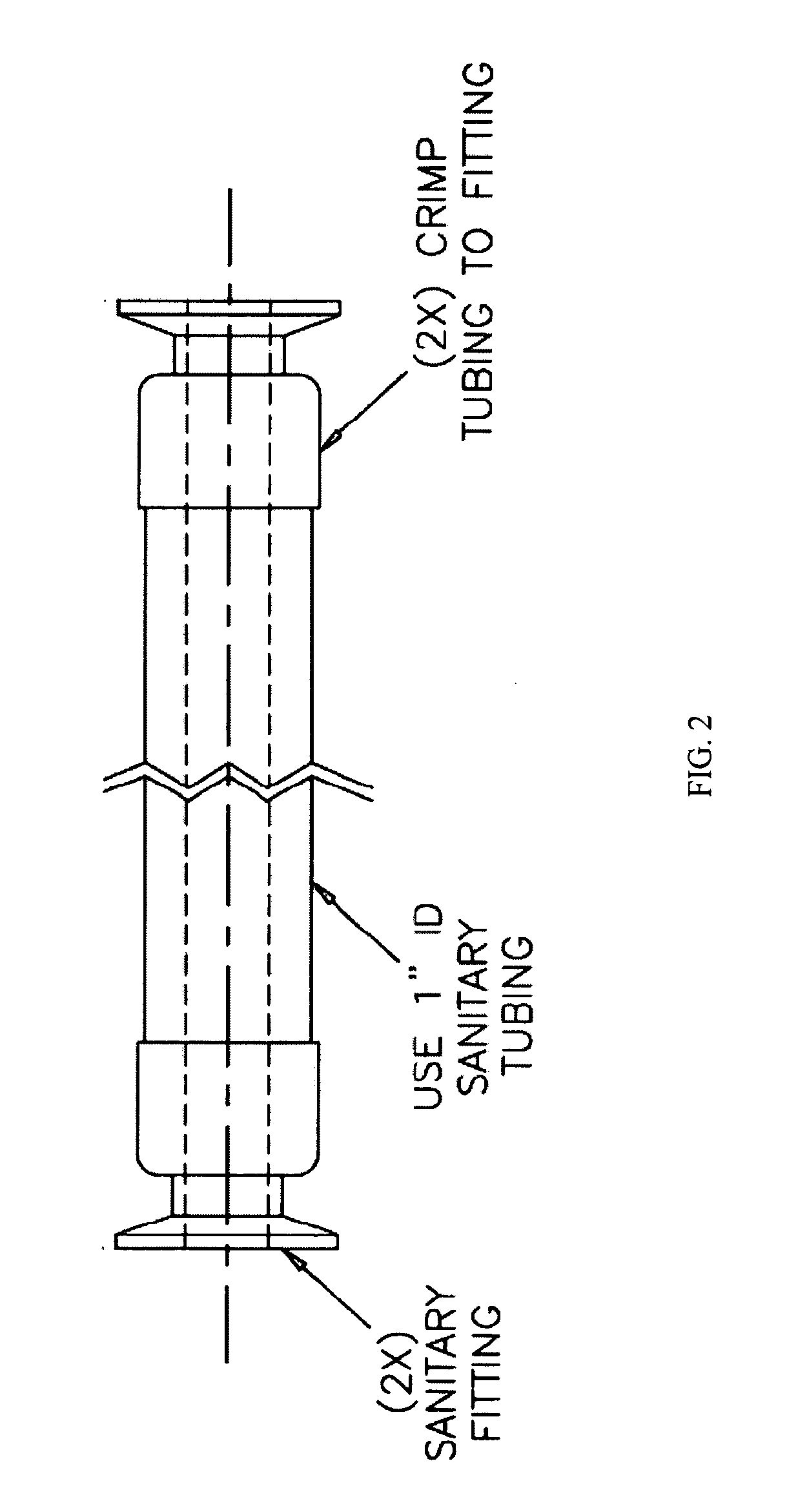System and Method for Pasteurizing Milk
- Summary
- Abstract
- Description
- Claims
- Application Information
AI Technical Summary
Benefits of technology
Problems solved by technology
Method used
Image
Examples
Embodiment Construction
[0024]Systems and methods are provided for pasteurizing milk or other fluids, and for cleaning and disinfecting processing passageways prior to and after the milk processing.
[0025]In some embodiments, systems and methods for pasteurizing milk are provided that have a very low, if any, impact on the characteristics of the raw, unpasteurized milk. In other words, the pasteurized milk output by the system and method is the same as, or substantially the same as, the raw milk input to the system and method in terms of, for example, its texture, flavor, aroma, and / or nutritional value. For example, such a system and method may operate at a very low flow rate (e.g., less than about 5 GPM, less than about 3 GPM, or at about 1 GPM) while carefully controlling the pasteurization process including in terms of its temperature and duration of heat exposure of the raw milk, thus safeguarding and preserving the characteristics of the raw milk while ensuring that it is safe and substantially free (...
PUM
 Login to View More
Login to View More Abstract
Description
Claims
Application Information
 Login to View More
Login to View More - R&D
- Intellectual Property
- Life Sciences
- Materials
- Tech Scout
- Unparalleled Data Quality
- Higher Quality Content
- 60% Fewer Hallucinations
Browse by: Latest US Patents, China's latest patents, Technical Efficacy Thesaurus, Application Domain, Technology Topic, Popular Technical Reports.
© 2025 PatSnap. All rights reserved.Legal|Privacy policy|Modern Slavery Act Transparency Statement|Sitemap|About US| Contact US: help@patsnap.com



